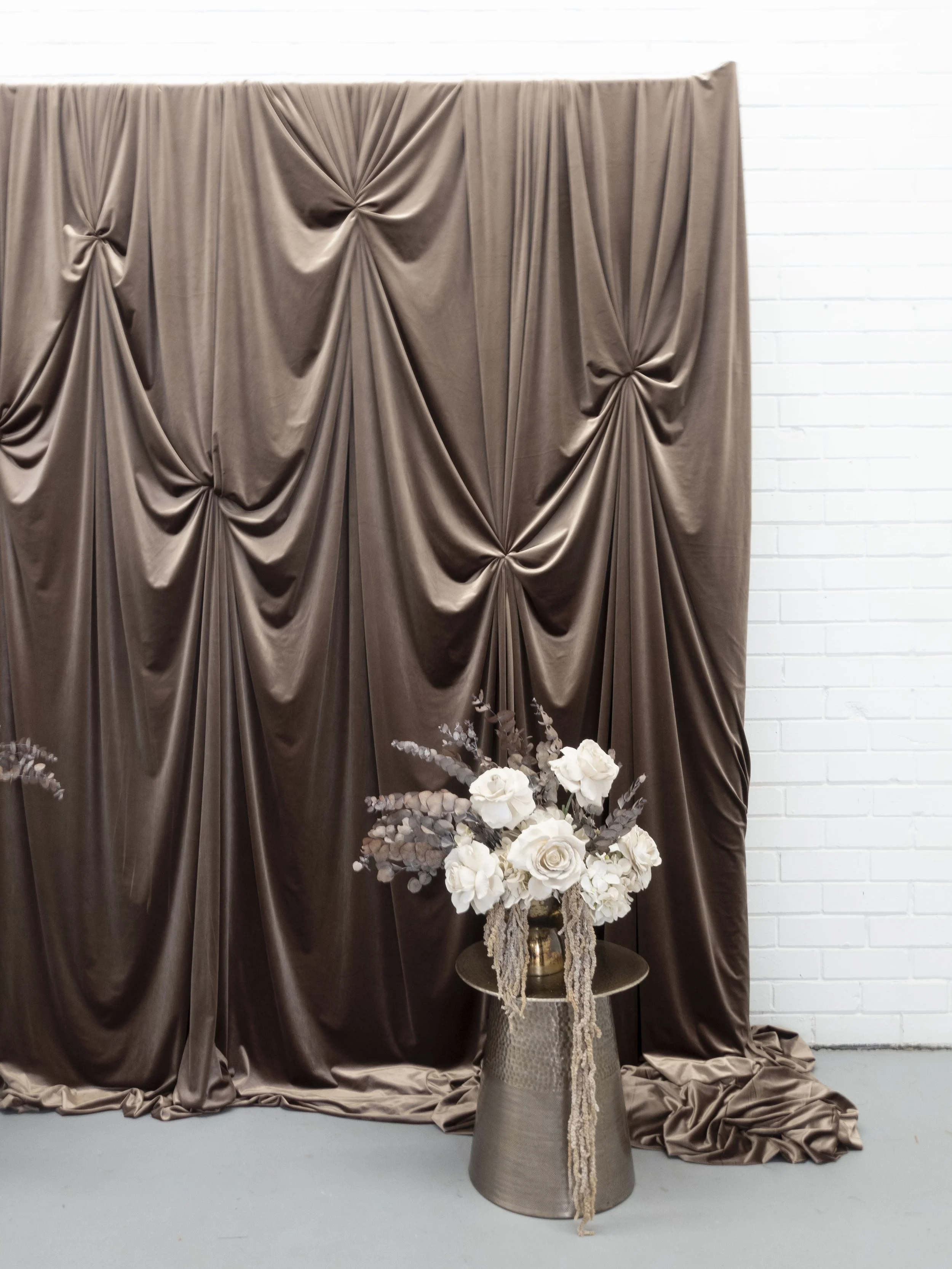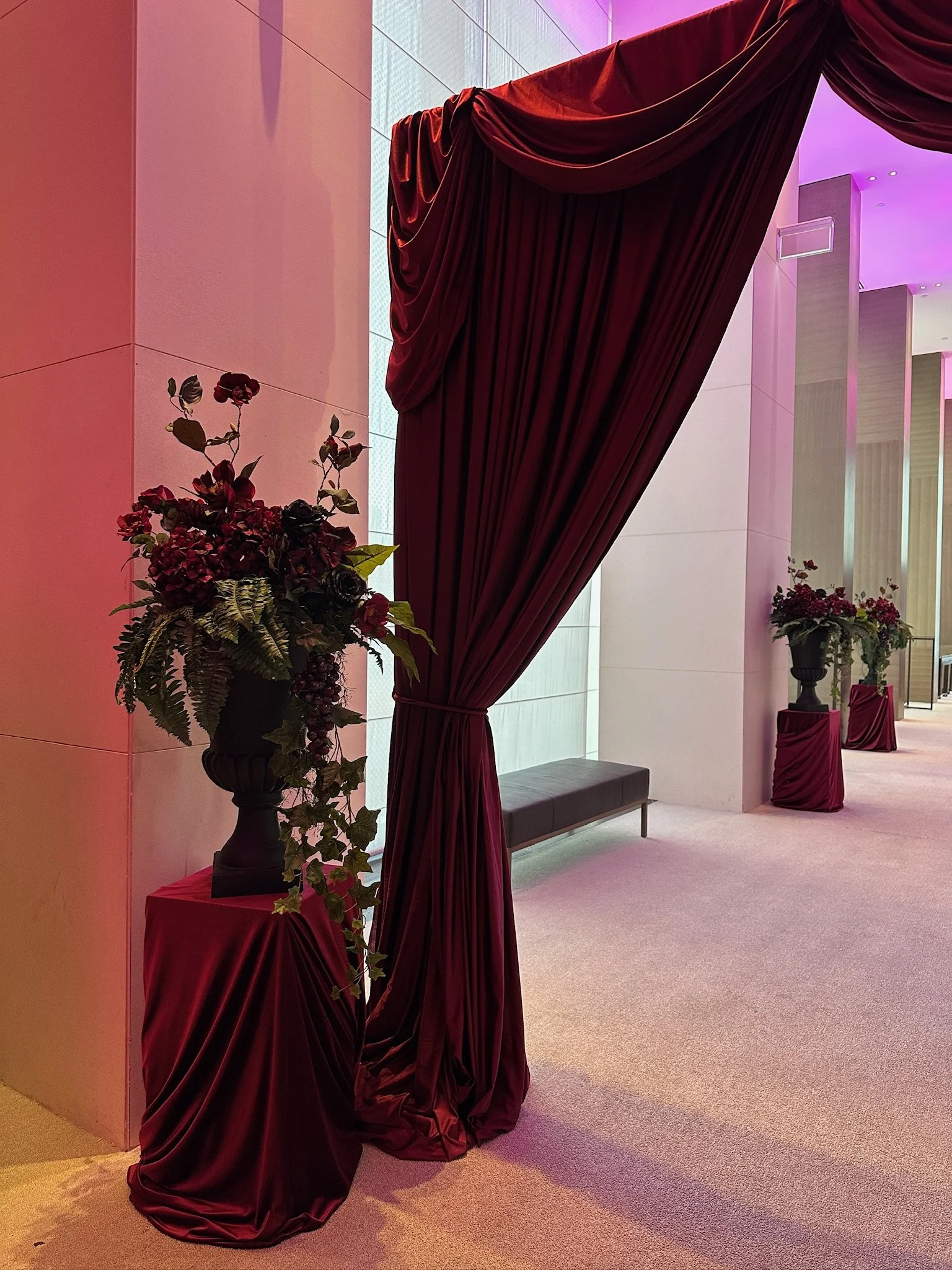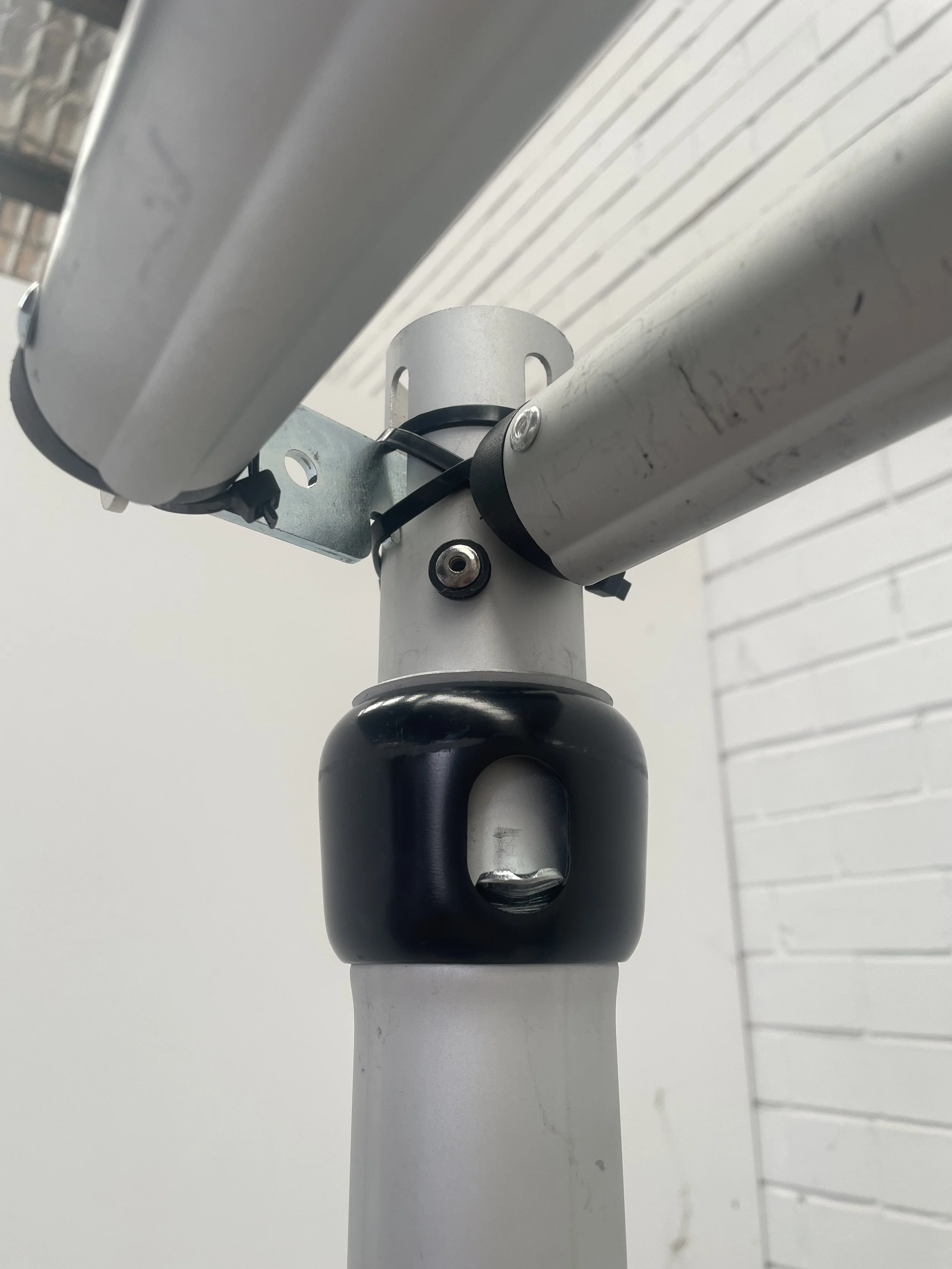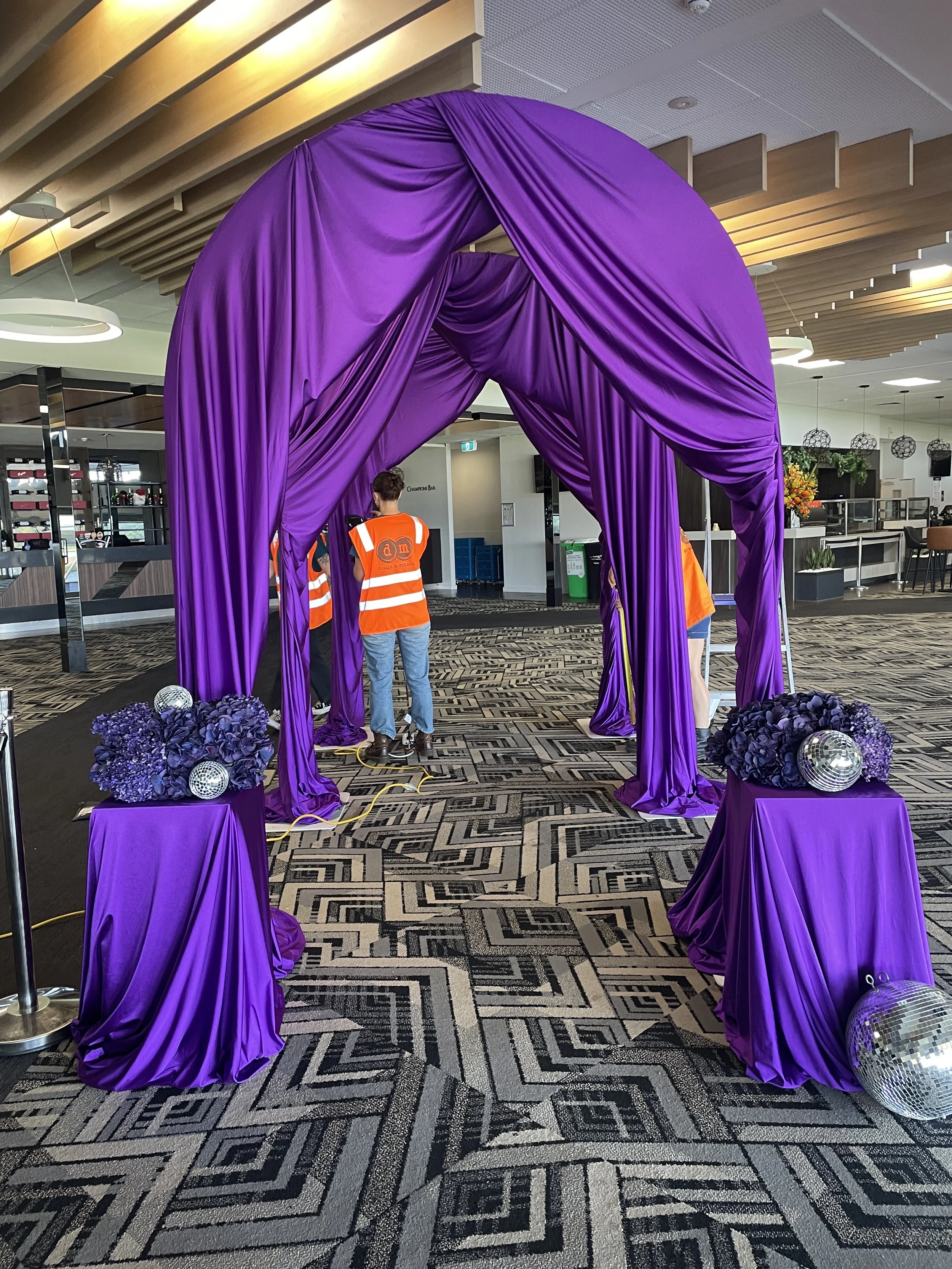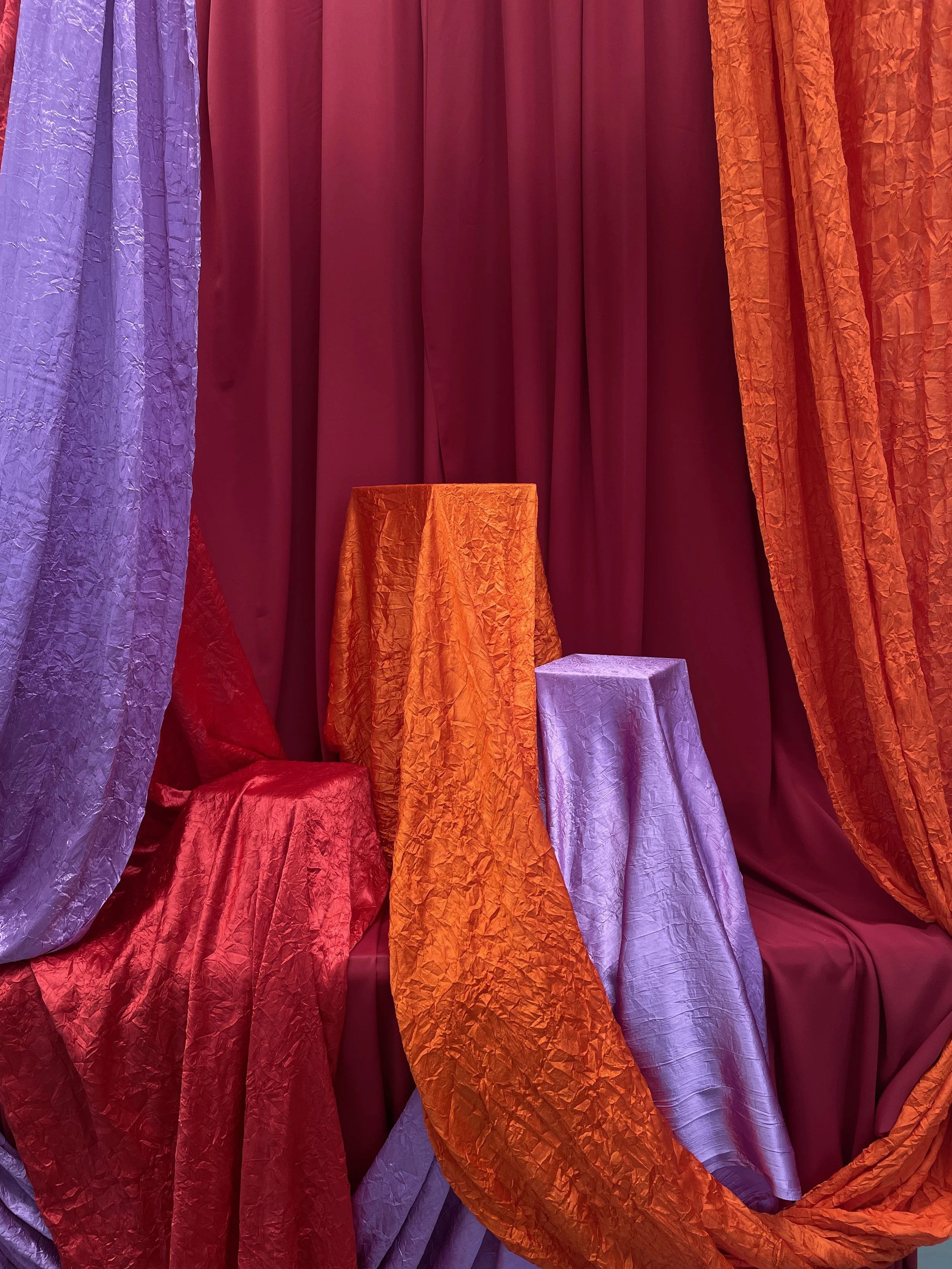Top 10 Tips for Starting Out in Drapery
Drapery has become one of my favourite styling tools - it’s versatile, reusable, and instantly transforms a space. Whether you’re dressing a retail window, creating a backdrop for an event, or adding texture to an activation, fabric can soften, frame, and elevate almost anything.
At Design Merchants, we’ve been experimenting with drapery for the past few years - testing, tweaking, and learning through trial and error. With this and a cheeky three decades in the world of visual merchandising and event styling, I’ve picked up a few lessons worth sharing.
Here are my top ten tips in no particular order for anyone starting out with drapery - whether you’re styling your first event backdrop or planning something grander.
1. It’s All Smoke and Mirrors
Fabric is a playful, unpredictable material. Sometimes it falls beautifully; other times, it has a mind of its own. Don’t be discouraged, every attempt helps you understand the nature of different fabrics. With practice, you’ll learn how to coax them into shape and choose what works best for each setup.
Our botanical olive green drapery and floral tower concept. We have reworked this for window displays, simple backdrops and Christmas!
2. Don’t Worry About What’s Behind It
The magic of drapery lies in illusion. What’s happening behind the scenes doesn’t matter as much as it’s facade - it just needs to be safe, stable, and well-concealed. You can usually cover your structure or fixings with fabric once the main drapes are in place. Just make sure that if it is double sided or seen from the reverse that you make that side presentable too.
Mocha Mousse luxury velvet backdrop with pinched effect
3. Safety First (Always!)
Pipe and drape systems are a classic for a reason, but make sure your bases are properly weighted and secure. Each location will have different conditions - for example, a windy outdoor setup near the coast might need a much sturdier frame than an indoor display.
Additional weights on the base of this pipe and drape as we were using heavier fabrics like velvet.
4. The Fixings You’ll Actually Use
There’s no universal method when it comes to fixings. We’ve used everything, but our most used fixings are zip ties, large clamps (hardware store heroes!) and large safety pins. The trick is being prepared with extra options - keep a small “drapery kit” handy for any unexpected challenges.
Adding zip ties to secure the poles on the pipe and drape backdrop stand
5. The Power of Finishing Touches
Even if your fabric has stretch and naturally smooths out, don’t skip the steaming stage. A quick pass with a handheld steamer gives that crisp, professional finish. It’s one of those small details that instantly takes your setup from “nice” to “wow.”
The team steaming the fabric and preparing to pool fabric over the bases of the arches | Taylor Weir Graduation Entry
6. You Can Drape Almost Anything
From arches and plinths to furniture and tables, nearly anything can be transformed with fabric. Experiment with how different weights, textures, and colours fall across various shapes - it’s the best way to understand what works.
Soft drapery on corner backdrop and plinths for retail activation | Preparing for the Westfield Booragoon Styling Series Activation
7. Ladder Safety (Because It Matters)
I’ve seen too many people on-line standing on the very top rung of a ladder or a chair - and it still makes me nervous! Use a solid, stable step ladder with a platform and support bar. You’ll feel steadier, safer, and more in control.
Our favourite platform ladder, comes in a variety of heights.
8. Choose Fabrics That Work Hard
Fabric selection is everything. If you’re designing something you’ll reuse multiple times, look for stretch jerseys, luxe velvets, or four-way stretch materials that hold up well over repeat installs. These drape beautifully, travel well, and look high-end.
Lunar New Year Backdrop with luxury stretch velvet and stretch jersey | Unilodge Curtin
9. Start Small and Play
Don’t feel like you need to tackle a full-scale backdrop right away. Some of our earliest experiments were simple - a grouping of small plinths, a few metres of fabric, and a handful of props. Use offcuts or fabric remnants to test how much fabric you really need and to practice your technique.
Practicing with a small set with mini plinths and backdrop
10. Store and Care for Your Fabrics
Keep your fabrics in good condition so they can be reused across multiple projects. Gently fold or roll them after use. We use plastic crates to store them in but watch for humidity. Avoid long-term creasing and refresh with a steamer before or at each install. A little care goes a long way - and your future self (and your budget) will thank you!
Why I Love Drapery
For me, drapery is one of the most creative, sustainable, and cost-effective design tools available. With a bit of imagination, you can reuse and rework fabrics again and again across different retail displays, events, and activations.
So grab some fabric, a steamer, and a little curiosity - and start draping! Or if you are in Perth, Western Australia you can book us to create your vision for you!
Until Next time,
Juliet



